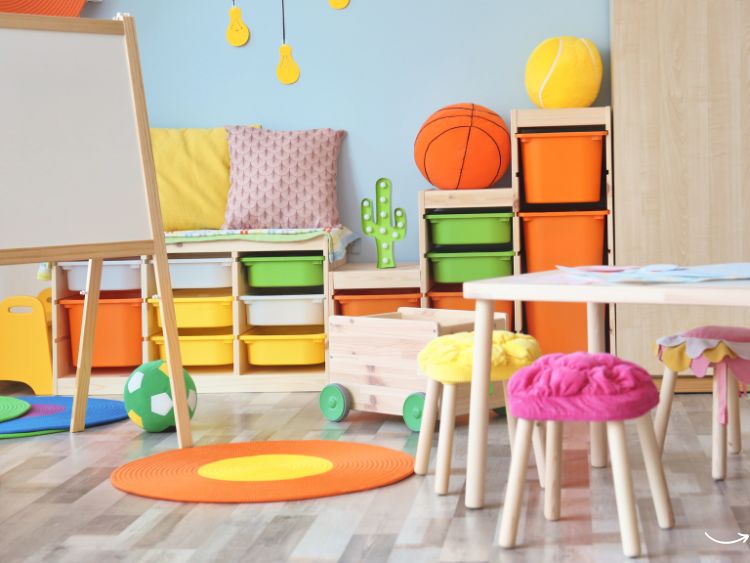Have you ever walked into a classroom and felt instantly inspired to learn? That’s the magic of effective classroom interior decoration. A well-decorated classroom doesn’t just look good; it plays a crucial role in enhancing student engagement and learning outcomes. In this article, we’ll dive deep into the world of classroom interior decoration, exploring how to create a space that’s not only functional but also inspiring and conducive to learning.
Why Classroom Interior Decoration Matters
Decorating a classroom isn’t just about aesthetics; it’s about creating an environment that fosters learning and development. Here’s why it’s so important:
- Enhanced Learning Experience: A thoughtfully designed classroom can significantly boost students’ focus and productivity.
- Increased Engagement: Colorful and interactive decorations can make learning more enjoyable and engaging.
- Better Organization: A well-organized space reduces distractions and helps students stay on track.
- Positive Atmosphere: A bright and cheerful classroom can positively impact students’ moods and attitudes towards learning.
Key Elements of Classroom Interior Decoration
To create an effective learning environment, consider incorporating the following elements:
1. Color Scheme
Colors can greatly influence mood and behavior. For classrooms, it’s essential to choose colors that stimulate learning without being too distracting. Here are some tips:
- Blue: Promotes calmness and concentration.
- Green: Encourages a sense of balance and harmony.
- Yellow: Stimulates creativity and energy.
- Soft Pastels: Create a soothing and welcoming environment.
2. Lighting
Good lighting is crucial for reducing eye strain and maintaining focus. Natural light is the best, but if that’s not possible, opt for bright, white lights that mimic daylight.
3. Furniture Arrangement
How you arrange the furniture can significantly impact the classroom dynamic. Consider the following:
- Flexible Seating: Allows students to choose where they feel most comfortable.
- Group Clusters: Encourage collaboration and group work.
- Teacher’s Area: Should be easily accessible to all students for questions and guidance.
4. Interactive Walls
Use walls to create interactive learning spaces. Here’s how:
- Bulletin Boards: For displaying student work and important announcements.
- Chalk/White Boards: For interactive lessons and brainstorming sessions.
- Educational Posters: Reinforce key concepts and provide visual aids.
5. Storage Solutions
Clutter can be a major distraction. Utilize smart storage solutions to keep the classroom tidy:
- Cubbies and Shelves: For organizing books and supplies.
- Labeling: Clearly label storage areas to help students find and return items easily.
- Bins and Baskets: For keeping smaller items neatly stored.
Tips for Effective Classroom Interior Decoration
Creating a well-decorated classroom doesn’t have to be overwhelming. Follow these tips for a seamless process:
1. Plan Ahead
Before you start decorating, make a plan. Sketch out the layout and decide on a color scheme, furniture arrangement, and decoration themes.
2. Involve Students
Get your students involved in the decorating process. This can increase their sense of ownership and pride in their learning environment.
3. Use Multi-Functional Items
Opt for items that serve more than one purpose. For example, storage benches can provide seating as well as storage space.
4. Stay Organized
Keep an organized approach throughout the decorating process. Regularly check and update the decorations to keep the classroom looking fresh and inviting.
FAQs about Classroom Interior Decoration
What colors are best for a classroom?
Colors like blue, green, and soft pastels are ideal for classrooms as they promote a calm and focused atmosphere.
How can I make my classroom more engaging?
Incorporate interactive elements like bulletin boards, educational posters, and flexible seating arrangements to make the classroom more engaging.
What are some cost-effective decorating ideas?
Use DIY decorations, repurpose old items, and involve students in creating artwork to keep decorating costs low.
Summary
Classroom interior decoration is more than just a creative endeavor; it’s a strategic approach to enhancing the learning experience. By considering elements like color, lighting, furniture arrangement, and storage, you can create a classroom that not only looks good but also supports and encourages student learning. Remember, a well-decorated classroom can make a significant difference in students’ academic success and overall well-being.
For more information and inspiration on classroom interior decoration, check out these resources:
- https://www.edutopia.org/classroom-design
- https://www.teachthought.com/classroom-management/classroom-design/
- https://www.weareteachers.com/classroom-decorating-ideas/
